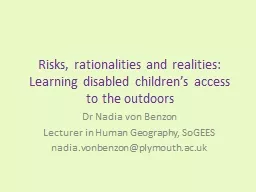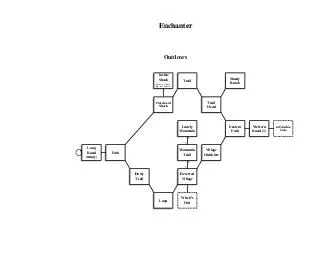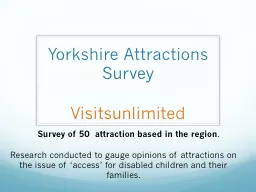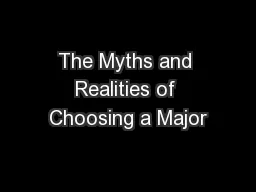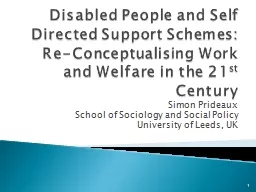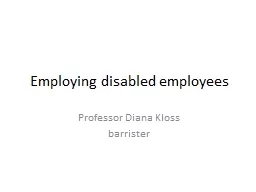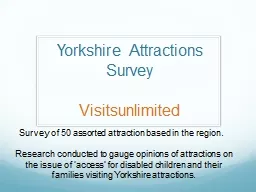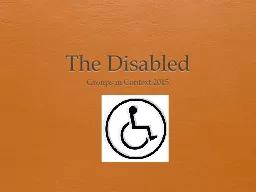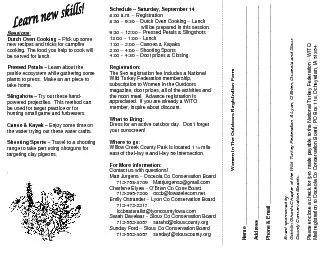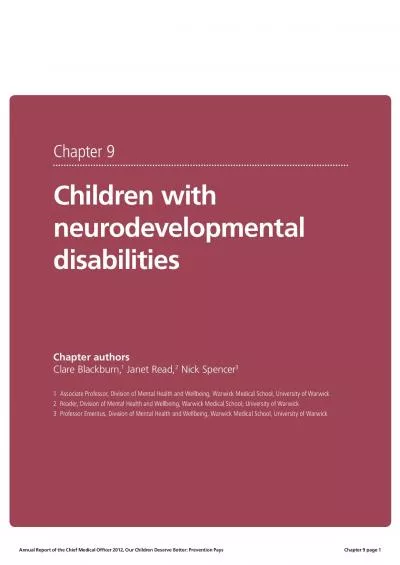PPT-Risks, rationalities and realities: Learning disabled children’s access to the outdoors
Author : stefany-barnette | Published Date : 2019-03-15
Dr Nadia von Benzon Lecturer in Human Geography SoGEES n adiavonbenzonplymouthacuk Research explored the relationship including experiences and perceptions between
Presentation Embed Code
Download Presentation
Download Presentation The PPT/PDF document "Risks, rationalities and realities: Lear..." is the property of its rightful owner. Permission is granted to download and print the materials on this website for personal, non-commercial use only, and to display it on your personal computer provided you do not modify the materials and that you retain all copyright notices contained in the materials. By downloading content from our website, you accept the terms of this agreement.
Risks, rationalities and realities: Learning disabled children’s access to the outdoors: Transcript
Download Rules Of Document
"Risks, rationalities and realities: Learning disabled children’s access to the outdoors"The content belongs to its owner. You may download and print it for personal use, without modification, and keep all copyright notices. By downloading, you agree to these terms.
Related Documents

